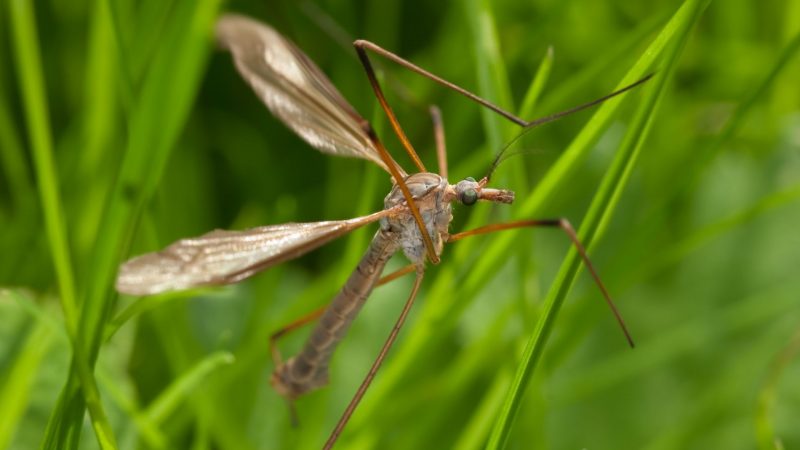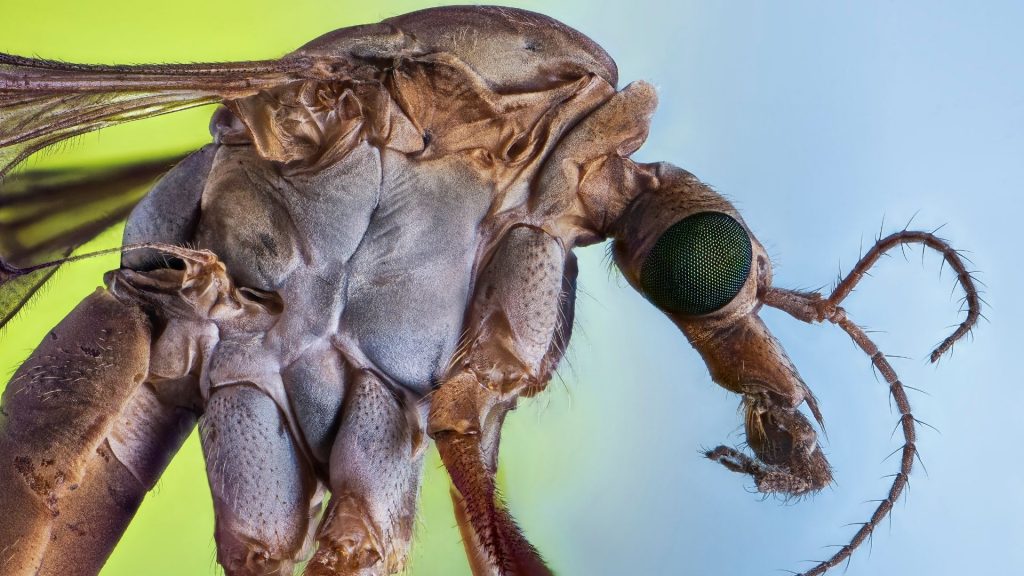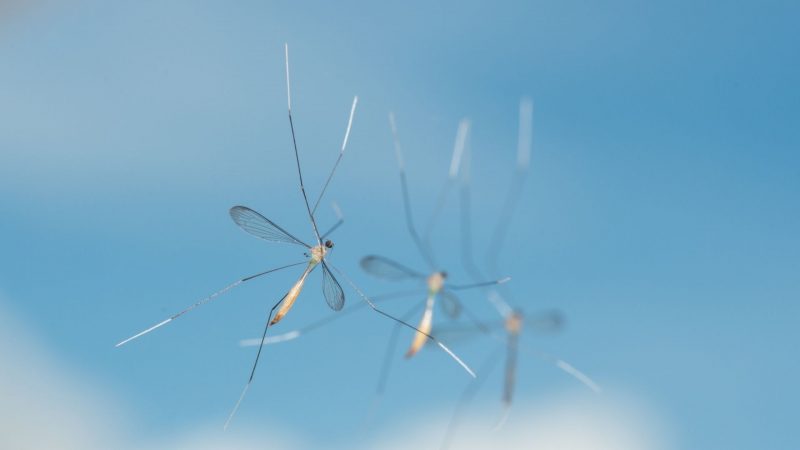It is most likely that you’ve seen these long-legged, flying insects that seem like giant mosquitoes around your property. They are often seen inside the house and have unusual flying behaviors. Little did you know that these insects are sometimes referred to as mosquito eaters.
What exactly are mosquito eaters? Crane flies are commonly referred to as mosquito eaters, due to the misconception that they prey on mosquitoes. Because of that, crane flies are also referred to as “mosquito hawks.” They may become garden or yard pests if infestations are severe.
This article will discuss the characteristics of these so-called mosquito eaters, including their nature, habits, and whether or not they actually eat mosquitoes as their name implies.
Why Are They Called Mosquito Eaters?

Crane flies were given the label mosquito eaters because they resemble huge mosquitoes, and it was long thought that they preyed on mosquitoes. Although crane flies have been found to feed on mosquito larvae, this is extremely rare. Moreover, even though they are called mosquito eaters, crane flies don’t actually eat mosquitoes.
Related: What Looks Like a Mosquito but Is Not a Mosquito? | Information and Facts
What Do Mosquito Eaters Eat?
Crane flies primarily feed on nectar from flowers and plants. Once crane flies reach the adult stage, they don’t feed on anything. On the other hand, crane fly larvae eat plant roots, stems, leaves, decaying wood, and other vegetation.
Why Are Crane Flies Also Called Mosquito Hawks?
They are also known as mosquito hawks due to the popular belief that they hunt mosquitoes using their large wings and long legs. However, they aren’t truly eating mosquitoes because they don’t eat other insects and prefer nectar and plants instead.
Aside from mosquito eaters and mosquito hawks, crane flies are known by a variety of names, including daddy long legs, Jenny long legs, gallinippers, and golly whoppers. It all depends on the country and region.
Related: What Are Those Really Big Mosquitoes? | Information and Facts
The Life Cycle of a Crane Fly

Crane Fly Eggs
Adult crane flies emerge in the summer and mate. Within 24 hours, female crane flies will lay eggs on turfgrass, moist soil in yards or lawns, and in bodies of waters like creeks and lakes.
Crane Fly Larvae
After 6 to 14 days, crane fly eggs will hatch into crane fly larvae, also known as leatherjackets. They have a worm-like form with tapered ends and range up to 2 to 3 inches in length.
Crane fly larvae have a strong outer layer of skin that is covered in tiny hairs. As mentioned earlier, they feed on plants, roots, stems, decaying wood, and vegetation. Crane fly larvae will then reach a non-feeding stage and spend the winter underground.
Related: Leatherjacket Control: How To Get Rid of Leatherjackets?
Crane Fly Pupae
In the middle to late spring, the larvae pupate just beneath the soil surface. These pupae are gray to brown in color and are roughly an inch long. In this stage, they no longer feed.
Adult Crane Fly
Adult crane flies will emerge in the summer to restart the cycle. They have a short lifespan, only long enough to mate and reproduce eggs. At this point, their mature length is approximately half an inch long.
How Long Do Mosquito Eaters Live?
Crane flies have a relatively short lifespan of 10 to 15 days. On the other hand, crane fly larvae can live for up to a year. They can survive the winter under the soil and then pupate into an adult over the spring and summer, beginning a fresh cycle each year. These creatures spend 95% of their lives as larvae.
Do Mosquito Eaters Bite Humans?
Crane flies don’t bite or sting humans. They feed on nectars, and most adult crane flies don’t feed at all. These creatures are harmless to humans and pets compared to actual mosquitoes that feed on blood and have the potential to carry diseases.
Why Do I Have So Many Mosquito Eaters in My Yard?

Adult crane flies are attracted to bodies of water and moisture in your yard. It could be a perfect location for them to mate and lay eggs. They are also drawn to your yard’s plants and flowers, where they can feed on nectar. Finally, they recognize that the plants and grass in the yard can provide a sufficient food source for their larvae.
How Do I Prevent or Treat Mosquito Eater Infestation?
To prevent or treat mosquito eater infestation, you may do the following:
- Mosquito eaters should be treated by eliminating their larvae. Adult crane flies have a short life span and are never a threat to humans. Their larvae, however, can live longer and can cause damage to plants in the yard or garden due to their huge appetite.
- Maintain healthy turfgrass in a home yard to avoid being infested by crane flies. Cut and mow grass regularly.
- Ensure proper drainage to avoid bodies of water in the yard that attract crane flies to lay eggs.
- Utilizing crane fly larvae pesticides in the spring can eliminate larvae and prevent them from repopulating in the summer.
Should I Get Rid of Crane Flies (Mosquito Eater)?

Crane flies are harmless to humans. The crane flies found inside houses and banging on walls and windows are lost flies attracted to lights. Although crane fly larvae have the ability to harm plants in residential gardens, they also aid in biological decomposition by feeding on decaying and rotting plants.
Plus, they can be a constant food source from other animals such as birds, frogs, and other grub-eating animals. Crane flies can be eliminated easily; nevertheless, keep in mind their potential contribution to the ecological system.
How Do You Get Rid of Crane Flies?
To get rid of crane flies, focusing on getting rid of their larvae is the key. Since most adult crane flies have a shorter life span, crane fly larvae are the ones who strive the most in-home yards and gardens. Below are methods to get rid of crane flies:
- Commercial pesticides containing imidacloprid or pyrethrin eliminate crane flies and larvae and are harmless for plants in home yards, lawns, and gardens.
- They can also be repelled by using essential oils at home, such as lavender, peppermint, and eucalyptus.
- Garlic is also good at repelling insects, including crane flies. Spread garlic across infested areas in lawns and yards.
- If crane fly infestations have gotten out of hand, contact a professional pest control service.
Is There Anything Good About Mosquitoes?

Mosquitoes are despised by many people. They can be found almost anywhere. These pests have been known to suck blood from humans and cause death as a result of the diseases they may carry. Mosquitoes are always viewed as enemies.
The moniker mosquito eaters came as a result of rumors that they hunt these hated mosquitoes. However, mosquitoes also contribute to the ecosystem. Because they are abundant, they become a regular food source for other animals that feed on them.
Related: Crane Fly vs Mosquito | Key Identifiers for Accurate Identification
List of Sources
Billeisen, T., Brandenburg, R. (2017). Crane Fly Larvae in Turf.
Colorado State University. (n.d.). Crane Flies.
Missouri Department of Conservation. (n.d.). Large Crane Flies.
Poorman, J. (2005). Beneficials in the Garden: Crane Fly.
Stolte, D. (2020). What’s up With All the Crane Flies?
Sutherland, A., et al. (2016). Crane Flies.
- Bed Bug Surge 2025: How to Detect, Prevent, and Safely Eliminate Infestations in Top U.S. Cities - June 18, 2025
- Asian Needle Ants Invade US Homes: 2025 Guide to Identification, Risks, and Effective Control - June 11, 2025
- New World Screwworm Alert: How US Livestock Owners Can Prevent Outbreaks and Protect Herds [Summer 2025 Update] - June 8, 2025
